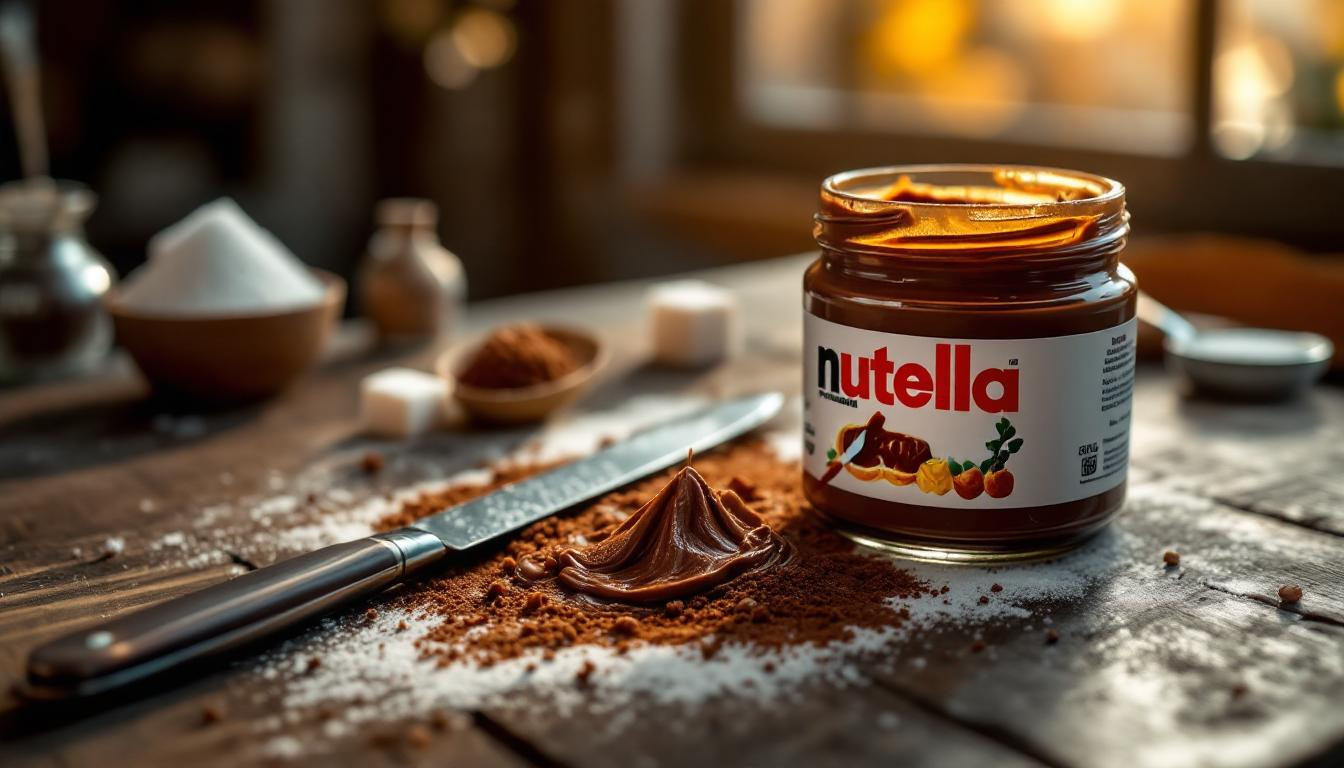Nutella’s sweet, creamy hazelnut spread has become a breakfast staple in millions of homes worldwide, but beneath its smooth chocolate exterior lies a concerning nutritional profile that deserves closer examination. This beloved spread contains ingredients and nutritional properties that health experts consistently flag as problematic.
The Sugar Shock: Nutella’s Primary Ingredient
The first ingredient listed on every jar of Nutella is sugar – making up approximately 57% of the entire product by weight. A standard 2-tablespoon serving (37g) contains a staggering 21 grams of sugar, equivalent to 5 teaspoons. Dr. Lisa Thornton, pediatric nutrition specialist, puts this in perspective:
“Many parents don’t realize they’re essentially serving their children candy for breakfast. Nutella contains more sugar per serving than many chocolate chip cookies or ice cream products.”
The American Heart Association recommends children consume no more than 25 grams of added sugar daily, meaning a single Nutella serving nearly reaches this limit. This excessive sugar content directly contributes to blood glucose spikes, insulin resistance, and potential weight gain when consumed regularly.
Palm Oil: Environmental and Health Concerns
The second most abundant ingredient in Nutella is palm oil, which gives the spread its smooth texture. This highly processed vegetable oil is high in saturated fats (3.5g per serving), which can raise LDL cholesterol levels and increase cardiovascular disease risk. The European Food Safety Authority (EFSA) has also raised concerns about glycidyl fatty acid esters that may form when palm oil is processed at high temperatures.
A cardiologist treating a patient with rising cholesterol levels recounted: “After reviewing my patient’s diet, I discovered he was consuming Nutella daily on toast. After eliminating just this one habit, his LDL cholesterol dropped 12 points over three months.”
Nutritional Value: What You’re Actually Getting
Despite containing hazelnuts, Nutella offers minimal nutritional benefits:
- Low protein content (only 2g per serving)
- Minimal fiber (less than 1g per serving)
- Few essential vitamins or minerals
- High caloric density (200 calories per 2 tablespoons)
When compared to natural nut butters like almond butter, which provides 5g of protein, heart-healthy fats, and significant amounts of vitamin E, magnesium and fiber, Nutella falls dramatically short. Its hazelnut content is only about 13%, far too little to provide meaningful nutritional benefits.
Misleading Marketing: The “Healthy Breakfast” Deception
Nutella’s marketing historically positioned the spread as part of a nutritious breakfast, particularly for children. This strategy became so controversial that in 2012, Ferrero (Nutella’s parent company) settled a $3 million class-action lawsuit for falsely advertising Nutella as a healthy food product in the United States.
The spread’s packaging still features wholesome imagery like milk and whole grain bread, creating what nutritionists call a “health halo effect” – making consumers perceive the product as healthier than it actually is.
The Dopamine Hit: Why It’s So Addictive
The combination of sugar and fat in Nutella creates a powerful neurological response. Registered dietitian Emma Wilson explains:
“Nutella’s specific ratio of sugar to fat triggers the brain’s reward center much like addictive substances do. This makes portion control exceptionally difficult and encourages overconsumption.”
This exact combination – high sugar, high fat – is what food scientists call the “bliss point,” deliberately engineered to override natural satiety signals and encourage continued consumption.
Health Impacts of Regular Consumption
Consistent Nutella consumption has been linked to several health concerns:
- Increased risk of type 2 diabetes due to high sugar content
- Weight gain from high calorie density and poor satiety
- Potential contribution to non-alcoholic fatty liver disease
- Dental cavities from frequent sugar exposure
Like a wolf in sheep’s clothing, Nutella disguises itself as a reasonable breakfast option while delivering what is essentially a candy spread. The body processes Nutella much like it would any other high-sugar confection.
Healthier Alternatives Worth Trying
If you enjoy Nutella’s flavor profile but want something more nutritious, consider these alternatives:
Natural almond or hazelnut butter mixed with a small amount of high-quality dark chocolate creates a similar taste with significantly less sugar and more nutrition. Brands like Justin’s make chocolate nut butters with half the sugar of Nutella and more protein. You can also make positive dietary swaps that have measurable health benefits.
For the most nutritious option, try making your own by blending roasted hazelnuts with a small amount of cocoa powder, a touch of honey or maple syrup, and a dash of vanilla extract.
Making Informed Choices
Understanding Nutella’s true nutritional profile helps make informed decisions about its place in your diet. The order in which you consume foods matters, and starting the day with a high-sugar option sets a problematic pattern.
If you enjoy Nutella, consider treating it as an occasional dessert rather than a daily breakfast item. Like chocolate cake or cookies, it’s a treat best enjoyed mindfully and in moderation rather than as a dietary staple.
The creamy chocolate-hazelnut spread many have grown to love is essentially a candy product in spreadable form – delicious, yes, but far from the nutritious breakfast option marketing might have you believe. Monitoring your intake of such processed foods can lead to significant improvements in key health markers.
